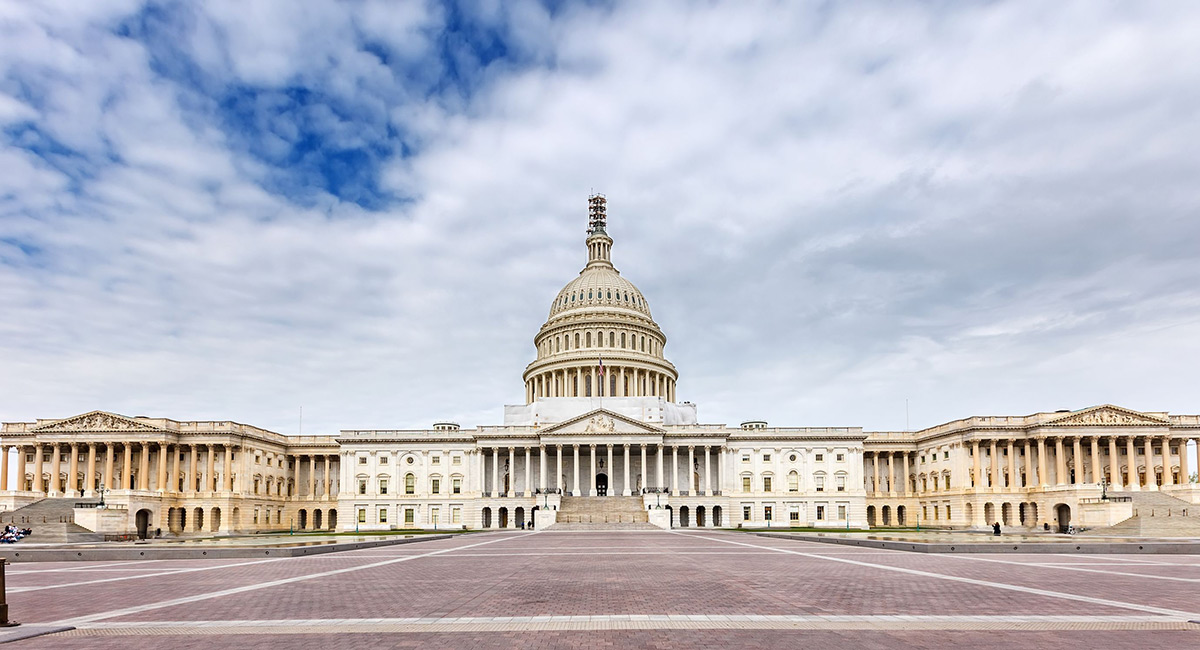At first glance, a lot of the social problems and resource waste emerging from government intervention seem pretty easy to fix: the government should just stop doing whatever it is doing that is creating the problems and the waste. The stubborn persistence of institutions and organizations that keep societies poor is a vexing problem for social scientists. In Political Capitalism, the economist Randall Holcombe takes on this problem by analyzing “political capitalism” as a distinct economic system with its own logic and features rather than as some kind of midpoint between capitalism and socialism.
As he points out, people do not generally demand “big government” in general. Rather, they demand intervention to solve specific problems when people believe using government is either cheaper or more than just relying on the market. The reader might be reminded of Milton Friedman’s observation that every businessperson believes in unregulated, free competition in every industry but their own—which, of course, must be protected and subsidized as a matter of “national security” or something like that.
If you surf the web a bit you might come across a picture of a protest sign with a slogan like “The system didn’t fail; it was designed this way.” Holcombe argues that it is a mistake to think Political Capitalism—he gets the term from the historian Gabriel Kolko, who in turn got it from Max Weber—was designed by sinister interests in a smoke-filled room. His goal is to understand “the system and its pathologies,” and, importantly, to show that “(p)olitical capitalism was not designed by the elite, it evolved as a result of human action but not of human design” (p. 269).
He makes an obvious point that a lot of economists are too quick to forget: “Economic policy is not made by economists, it is made by politicians” (p. 141). We are not, as too many scholars seem to think, disinterested technocrats whispering wisdom into the ears of benevolent and omnipotent autocrats. We should dispense with this presumption if we are going to make serious and meaningful progress toward actually understanding the world we inhabit, to say nothing of improving it.
The pathologies of political capitalism emerge too frequently and regularly to be a coincidence, but they emerge too haphazardly to be a conspiracy. Holcombe works to build a theory of political capitalism on a multidisciplinary foundation. He mixes the theory of economic and political elites as it has been developed by political scientists and sociologists with Good Old Fashioned, Methodologically Individualistic Public Choice Theory to help us understand what Ayn Rand called “the aristocracy of pull” in Atlas Shrugged.
One of the striking facts about the zeitgeist, Holcombe points out, is the many areas of agreement between the left and the right with respect to the characteristics of political capitalism. Using a series of quotes from David Stockman (on the right) and the Nobel Laureate Joseph Stiglitz on the left, he shows that both believe the political system is captured and dominated by political and economic elites who, to the best of their ability, run “the system” for themselves. If virtually everyone agrees that “the system” is controlled by elites for their benefit and at the expense of everyone else, why is it this way and why don’t we replace it with something better?
Holcombe builds a theory of political capitalism that might remind readers of the framework Douglass North, Barry Weingast, and John Wallis develop in their 2009 book Violence and Social Orders. North, Wallis, and Weingast distinguish between natural states, which “use the political system to regulate economic competition and create economic rents; the rents order social relations, control violence, and establish social cooperation,” and open access societies, where “entry and competition order social relations.”
Political Capitalism is a complement to North, Wallis, and Weingast because it helps us better understand the stability of elite coalitions and their ability to create rents by restricting entry. Readers might also be reminded of Gregory Clark’s 2015 book The Son Also Rises: Surnames and the History of Social Mobility. Clark shows how even very different societies exhibit similar social mobility patterns. To Clark, “social competence” is the secret sauce that helps people move into (or out of) elite circles. While Holcombe does not discuss “social competence” explicitly, his analysis complements Clark’s by marrying public choice theory to elite theory and explaining the bargains (sometimes implicit, sometimes explicit) that explain the stability of the political and economic elite.
Holcombe’s theory of the elite has three steps (p. 67): “Individuals sometimes act as members of groups rather than as individuals,” “Individuals sort into groups in which they have common interests,” and “Groups use any power at their disposal to provide institutional advantages to their group over others.” That one can be a beneficiary of these steps helps us understand why competition to get into the elite groups—by attending an elite college or university, for example—is so fierce.
Here is where Clark’s “social competence” is especially relevant. Holcombe explains that there are a lot of unwritten rules in the rent-seeking society that is political capitalism. Lobbyists understand, for example, that if they are invited to a reception hosted by a legislator, they had better show up. What’s more, they had better show up with a check. The opportunities to buy and sell influence—”pull”—are practically infinite, and they are often opaque. Holcombe offers the example of the Clinton Foundation, analyzed in a 2015 book by Peter Schweizer. Here is Holcombe (p. 268):
“In his 2013 book Extortion, [Schweizer] gives examples of the payments legislators extort from business interests in exchange for favorable legislation. In his 2015 book Clinton Cash, he describes how foreign governments and businesses made contributions to the Clinton Foundation when Hillary Clinton was Secretary of State from 2009 to 2013, rapidly followed by State Department policies and decisions that benefitted (sic) those donors. Did foreign governments and businesses receive favorable treatment from the State Department in exchange for their contributions to the Clinton Foundation? Schweizer presents evidence that they did, but Clinton says they did not.”
Holcombe offers this example to illustrate “the ambiguities inherent in regulation.” The system—which no one designed—encourages and reinforces activities that blur the lines between respectable rent-seeking and contemptible corruption.
Consider, for example, the problem of transitional gains and transitional losses. Institutional changes are capitalized into the value of assets that then receive no more than normal market returns. Holcombe points to taxi medallions in New York City, where the transitional gains—the present value of the rents accruing to taxi privileges—accrued to those who got the medallions first. Unsurprisingly, people who hold the medallions fight hard to avoid the transitional losses (reflected in falling values for taxi medallions) that come with the erosion or elimination of privileges.
This helps us understand the persistence of institutions that are unambiguously evil (like chattel slavery) and those that are merely inefficient (like the mortgage interest deduction). As an economist, I think we should get rid of the mortgage interest deduction. As someone who, as of this writing, is preparing to sign a thirty-year mortgage, I balk just a bit at the idea because eliminating that deduction would reduce the value of our home. Even if it were “offset” by a reduction in tax rates, it’s not clear that we would be better off. My narrow material interest makes it hard to say, “Let’s get rid of this special privilege that clearly benefits me.” It’s easier to push legislators and regulators to gore other people’s oxen and leave ours alone.
Herein lies the logic of Political Capitalism. As Holcombe explains, “The elite implement institutional changes, after all, and if changes could not assure benefits to those who have the power to change them institutional improvement is unlikely to occur” (p. 222). We cannot, in short, expect the elite to go to the barricades in the pursuit of policies that will make them poorer. Hence, resource-wasting, gains-from-trade-reducing policies persist in all their inefficient glory.
What, then, is to be done? In various places, Friedrich Hayek and Milton Friedman emphasize the importance of public opinion. Deirdre McCloskey argues that the Great Enrichment emerged in response to changes in how people think and talk about trucking and bartering. Holcombe seems to concur: “As the ideology of democracy has replaced the ideology of liberty, the force of government has encroached upon the voluntary exchange of markets” (p. 197).
If public opinion continues this drift, political capitalism will become harder and harder to uproot. Political capitalism grows as a hardy weed in the soil of ideas that might choke out the delicate flower of liberty; however, changing the intellectual soil and moving it in the direction of support for an open access society has the potential to fight back at least some of this encroachment.
People who teach principles of economics courses know the frustration. We spend a lot of time talking about how free markets work and how different government interventions like price controls and tariffs make things worse for the people their advocates claim to be trying to help.
We gloss over some of the important and real complications of transition between institutions if we limit ourselves to just saying, “The government should stop doing that.” Political Capitalism helps us understand why they don’t and, importantly, helps us plot a way forward by marrying elite theory to public choice.
The reader of Political Capitalism will be pulled away from blackboard models of perfect worlds we can imagine, but they will come away with a better understanding of the world we actually inhabit.









